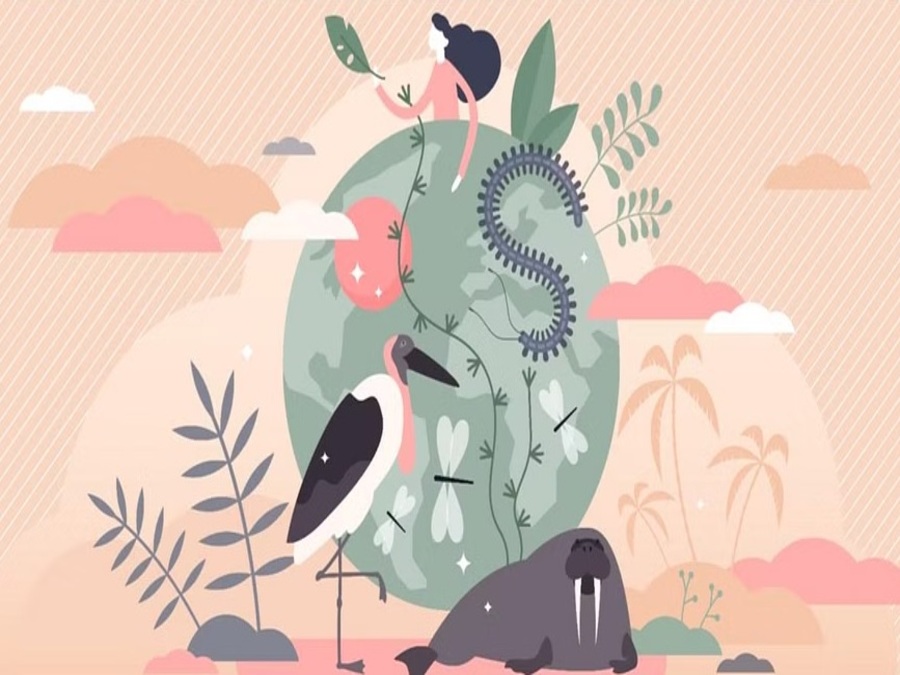Modern Technology for Wildlife Conservation
The world is endowed with a huge array of natural habitats that are home to a wide variety of wild plant and animal species. Nevertheless, a variety of global environmental changes, including land usage, desertification, deforestation, and climate change, have a detrimental effect on plant and animal life. The animal kingdom is currently facing serious threats; more than 1210 mammal species, 1469 bird species, 2100 reptile species, and 2385 fish species are in danger. The character of natural ecosystems is changing as a result of activities like illicit wildlife trading, the development of exotic species and illnesses, and human influence on the planet’s climate. Because of this, numerous conservation tactics, programs, and technology advancements have taken the lead over the past few decades.
The impact of human activities on the environment and biodiversity is becoming more widely recognized. Every year, a large number of species are added to the endangered species list, and the rate of habitat destruction is frightening. Even worse, species that haven’t even been found have gone extinct as a direct or indirect result of human action. Ecological stability depends critically on biodiversity, which will continue to decline in the absence of serious mitigating measures.
Technology advancements that connect the lives of birds and other creatures should be used to protect nature. Some of the cutting-edge modern technologies that are successfully transforming the field of animal conservation are
- Sensors Technology
- Drones
- Artificial intelligence (AI)
Sensor Technology
In many different industries, including business, research, healthcare, and others, sensors have a wide range of uses. However, in recent years, there has been an emphasis on employing sensors in wildlife conservation initiatives.
Few devices that are based on sensor technology are
- Anti-poaching transmitters: These are gadgets that may be attached to an animal’s body directly or to a collar to protect it from poachers. They track an animal’s position and keep track of its movements using a sensor. These transmitters can track an animal’s whereabouts in real-time and can even detect when it is in danger.
- Smart Collars: “Smart collars” that use GPS and accelerometer technology to track a wild animal’s whereabouts and daily activities. When people fully comprehend the behaviors of certain species of animals, they will be able to predict behavior, reduce conflicts between people and animals, and radically modify how people interact with and manage wildlife.
Drones
Drones aren’t just used by the military. A conservation drone outfitted with cameras, sensors, and GPS has been developed by ecologists and biologists to monitor deforestation and count orangutans and other endangered species in northern Sumatra. This invention may be used to provide real-time video and data streams, as well as to monitor and track long-term developments.
In the field of conservation, using drones to monitor animals is growing in popularity. These unmanned aerial vehicles (UAVs) provide a practical method for gathering information across large regions and monitoring the movement of animals in real-time. Drones have been employed in recent years for a range of wildlife monitoring tasks, such as tracking endangered species, examining habitats, and observing animal behavior. As well as observing the effects of human activity on animals, they may be used to spot unlawful hunting and poaching.
Since the technology makes it possible for researchers to gather data more rapidly and precisely than ever before, it has the potential to transform animal protection. Additionally, it can offer important insights into animal behavior, helping researchers better understand the requirements of the species they are studying.
Artificial intelligence (AI)
In order to determine where to concentrate conservation efforts, new predictive analytics software has been developed that can be used to gather enormous amounts of complex information about wildlife, such as where the animals are located, when they travel to other places, which is the big threat to their lives and why they are hunted. This innovative program might be crucial to protecting some species. Especially, Wildfires pose a very big threat to ecosystems, destroy vegetation, and release significant volumes of air pollution, while water loss has a terrible impact on species.
Mainly Artificial intelligence is nowadays used to detect and track wildfires. By using satellites to capture imagery roughly every few minutes, the software uses indicators of fire such as smoke and temperature changes through thermal infrared sensors to detect whether a fire has ignited and to track its whereabouts.
Secondly, surface water and undersea levels will be a major threat leading to enormous losses of animals. By displaying this information, AI also aids in revealing the water crisis in tropical wetlands
Additionally, AI and ML technology forecasts the future severity of the crisis. The forecasts assist in taking action to address the issues caused by the depletion of surface water to protect animals.
Modern technology gives humanity the chance to alter the landscape of conservation. By using cloud technology to circumvent physical and geographic limitations, analytics to evaluate data and provide policy advice, and modern technology to monitor the natural environment, people are beginning to develop the tools necessary to make a difference in current conservation efforts. Therefore, with modern technology, humanity has the opportunity to alter the conservation landscape.
Source
- https://thehill.com/changing-america/sustainability/environment/592820-these-new-technologies-could-transform-wildlife/
- https://education.nationalgeographic.org/resource/wildlife-conservation/
- https://www.yokogawa.com/special/sensing-technology/definition/
- https://www.techtarget.com/searchenterpriseai/definition/AI-Artificial-Intelligence
- https://www.allerin.com/blog/10-stunning-applications-of-drone-technology

